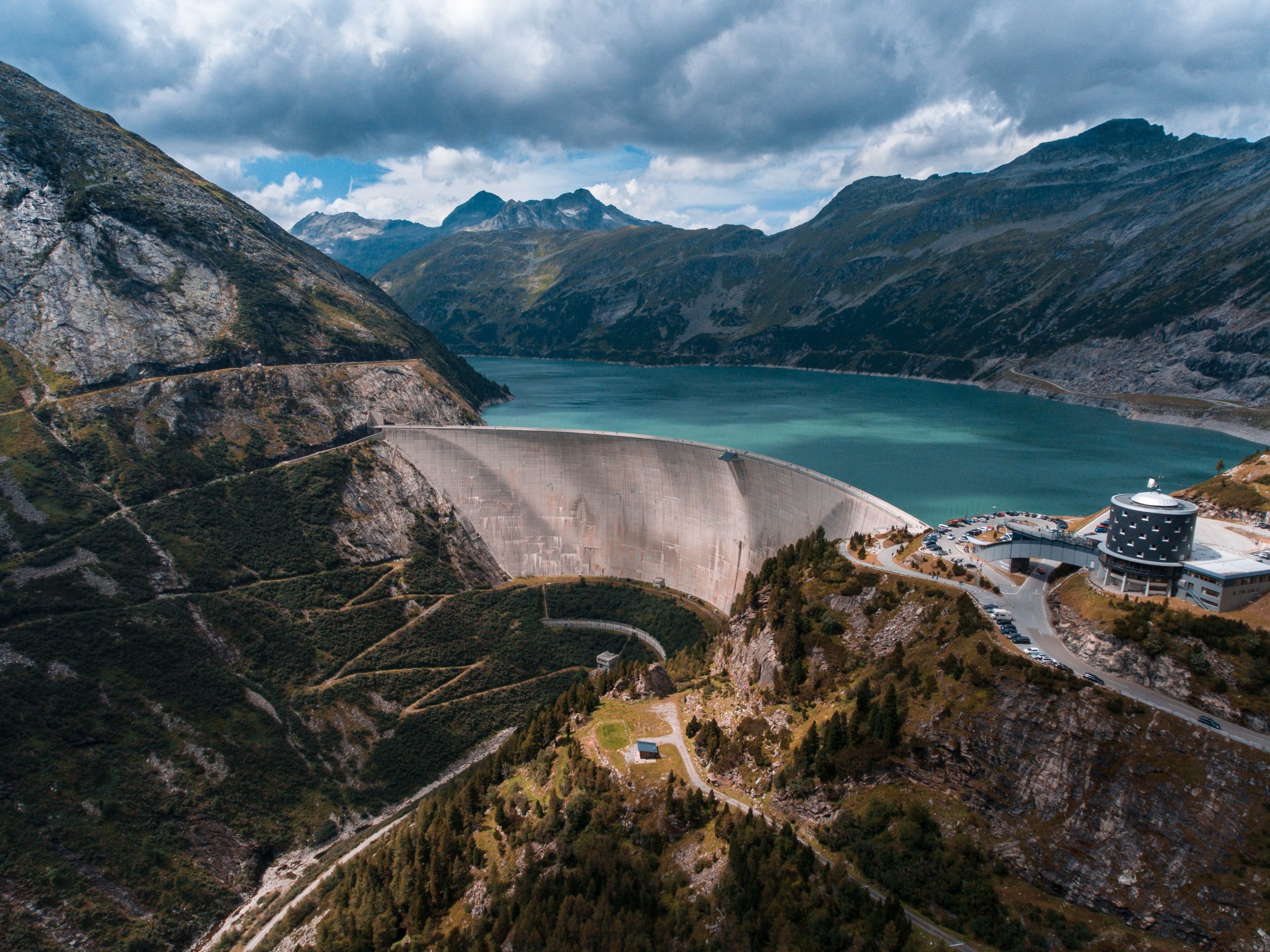
Water Data in Hydropower Relicensing
Ishani Palandurkar, Master of Environment Management, Nicholas School of the Environment, Duke University
August 2022
All across the country, privately-owned hydropower plants are nearing the end of their current licenses, giving communities the opportunity to reevaluate the value of these plants through the relicensing process. All non-federally-owned hydropower plants are regulated by the Federal Energy Regulatory Commission (FERC), an independent agency within the Department of Energy. Among other things, FERC issues licenses to hydropower plants that lay out conditions for their operation and typically last 30-50 years. There are a little over one thousand FERC-licensed dams across the United States, and more than 400 of them are scheduled to come up for relicensing by 2033. Most of these are located in New England, the Upper Midwest, California, and the Pacific Northwest.
FERC relicensing is going through an innovative period, with industry representatives and stakeholders pushing for reforms to the Federal Power Act. Recent court cases have also sought to clarify the roles of various agencies and timelines for their actions and responsibilities throughout the process.
Reconciling the critical role of dams in flood control, flow regimes, recreation, energy production, and increasingly grid flexibility for other renewable energy sources, with their effects on biodiversity and water quality, is at the heart of the relicensing process. Therefore, it requires engagement with public and private entities that could be affected by the dam’s operation. Several options are available to applicants for the licensing process, with slightly different timelines and levels of public consultation, but each involves an extensive information gathering phase and study seasons.
“FERC relicensing is going through an innovative period, with industry representatives and stakeholders pushing for reforms to the Federal Power Act.”
Since hydropower plants can cause fundamental changes in many aspects of a river system and its surroundings, a wide variety of stakeholders often participate in relicensing to ensure the protection of their specific interests. For example, conservation organizations often advocate for dam removal to restore streams and wildlife habitat or measures that protect, mitigate, or enhance the local environment. Many federal and state agencies participate in relicensing to protect resources over which they have jurisdiction. FERC must consult with federally recognized Tribes during the relicensing of a dam that could affect any tribal rights or resources, especially treaty rights. Local governments, too, often participate to protect the public water supply and access to aesthetic and recreational resources. Local landowners or irrigation districts frequently intervene to protect domestic supply, water rights, and allocation.
Communicating and finding consensus with all of these stakeholders, involves gathering, compiling, and sharing massive amounts of information and data on dam operations and their effects on nearby environmental conditions. Many of these dams were constructed and licensed before some of the landmark federal environmental laws were passed, namely, the Clean Water Act and the Endangered Species Act. Water quality and species data are used throughout the relicensing process to certify the ability of a dam to comply with these laws.
Data sharing is a key element in the process. When done well, it provides clarity and transparency and enhances decision-making. When done poorly, it wastes time and effort. The number of dams nearing the end of their licenses and the importance of hydropower to local communities makes FERC relicensing a great venue to display the benefits and value of accessible and interoperable water data.
Understanding the FERC Hydropower Relicensing Process
The hydropower relicensing process is detailed and requires multiple documents and deliverables at different stages of the application. On average, the process takes 5-10 years to complete. Applicants for licenses can include private utility companies, other private companies, municipalities, and private citizens. Applicants often hire consultants to manage the relicensing process. There is a lot of diversity in the size and complexity of the hydropower projects licensed by FERC and the level of resources that applicants can bring to the process.
To begin, applicants must file public notice of their intent to seek a relicense and then identify relevant stakeholders and develop a plan and schedule for the relicensing process that coordinates all required FERC filings with other local agency requirements.
The applicant then gathers all existing relevant data and information to compile into a report that outlines current project operations and includes details on all possible safety and environmental issues associated with future operations, as well as what steps will be taken to mitigate those risks. The applicant must demonstrate sufficient due diligence to gather as much relevant data and information as possible at this stage. Frequently, applicants hold meetings with stakeholders or form working groups that include agency representatives to identify the location of important datasets, avoid redundant searching, and identify data gaps where more thorough investigation is needed. This iterative process involves presenting data already gathered, soliciting more data, and integrating all of it, in multiple cycles.

Kees Streefkerk, Unplash
Needless to say, such thorough, rigorous information gathering can be a challenge for applicants and similarly burdensome on local agencies and other outside entities who supply data and are often responsible for ensuring the completeness of the information.
Once this phase is finally complete, the licensing process moves into a scoping period when any remaining information gaps are identified and the applicant proposes a study plan to fill those gaps. Stakeholder engagement is again critical to address the preferences and concerns of all relevant parties and ensure any conflicts are resolved. After the approval of the study plan, the applicant must implement the study plan and report progress and any data collected or used in the process.
After all of the required study seasons are over and the newly generated data have been sufficiently analyzed, the applicant must file a proposal for the license containing all of the information from all phases of the process. FERC staff then uses that information to prepare an Environmental Assessment or Environmental Impact Statement consistent with the National Environmental Policy Act. If the project is considered in compliance with all other laws and local authorities FERC issues the license.
What Data is Important to the FERC Hydropower Relicensing Process?
Which datasets become the most important in any given hydropower relicensing project varies widely based on the dam’s location, its size, type of operations, the local environment and mix of species, etc. However, a significant hurdle for every relicensing is obtaining 401 certification from the state or tribal agency that has authority over the Clean Water Act. This certification verifies that any discharges from the hydropower project are consistent with water quality standards. So, water quality data, especially dissolved oxygen and temperature, data are often key datasets.
Sometimes the needed water quality data already exists within state agency monitoring program databases or is collected by volunteers via a local watershed organization, and in this case, must be modeled with the project’s proposed operations. More often the applicant will have to conduct studies to collect the data in the required quantities and frequencies
Similarly, water availability and usage data are equally important in assessing dam operations and their effects on other conditions, such as instream flow downstream of the facility, water availability forecasts, future effects of climate change, and sometimes comparison to unimpaired (pre-project) hydrology.
Given that hydropower projects affect the ecology of the area, agencies such as US Fish and Wildlife Service (FWS) and the National Oceanic and Atmospheric Administration (NOAA) determine the effect of the project on the species in the region and how can they be protected. Therefore, wildlife, habitat, fisheries, and soil data are also crucial to the assessment of the application.
Cultural and recreational resource data are also important to provide information about any cultural or recreational development within the project boundaries that affects the local economy and community.
The Water Data Challenge
Data related to relicensing are cross-sector and cross-purpose (e.g., habitat, species, energy, water quality, and water quantity). No single agency is the natural home for the compiled data, and thus no single agency will be tasked with assembling the relevant data. This undermines any impetus or incentive to develop modernized data processes.
Some data is available via online portals to federal and state agency databases, GIS catalogs, or peer-reviewed literature. Much of the data and information, however, must be collected via targeted requests to the owners of the data or through interactive discovery during meetings and workshops with stakeholders. There is wide variety in the resources that applicants are able to bring to bear during this phase, and therefore in the thoroughness and completeness of the initial information and data gathering.
Accessing and reusing water data from different sources can be a challenging prospect due to its extraordinary fragmentation. Water data is collected by multiple agencies across different scales of government and non-government organizations for many different purposes. Each agency has its own techniques for recording, reporting, and storing data. Since data are scattered across multiple platforms with different standards, reusing it beyond its primary purpose and transforming it into information that supports decision-making in the context of hydropower relicensing can be incredibly difficult.

Altumcode on Unsplash
There is little consistency in data-sharing methods across projects, and procedures are ad hoc and largely at the discretion of the licensee. Very few guidelines, standards, or enabling technologies (aside from FERC’s eLibrary) exist for data-sharing. Any data quality or format standards that do come into the process, do so via state agencies, but these standards rarely cross state lines, making cross-boundary projects and broader regional studies more difficult.
Access to raw data can often be a challenge for stakeholders, especially beyond the life of any particular relicensing. Data collected for environmental studies is heterogenous and its implications are sometimes only shared via analysis in assessments and reports. Lack of availability of raw data can lead to delays and conflicts during the study period because results presented in reports are subject to interpretation, and often challenged by stakeholders. The lack of data transparency limits the ability of non-specialists to engage with the relicensing process overall. Since an individual relicensing process can last years, staff turnover and general technical capacity at agencies and stakeholder organizations can add to these challenges.
Benefits of Modern Water Data Infrastructure
The Internet of Water Coalition is working to modernize water data infrastructure by developing technologies for sharing and integrating water data, and demonstrating, through collaborative projects and impactful use-cases, the power of those technologies to improve sustainable, equitable, and resilient water outcomes.
Making data available, discoverable, and accessible has the potential to provide numerous benefits in the context of hydropower relicensing. Integrated data sharing reduces the considerable time analysts must spend finding, cleaning, and aligning data – all time that could be more productively spent on creating insights and communicating results.
Transparent data sharing also provides a common foundation of facts for negotiation between stakeholders, potentially building trust and reducing conflict. Improving hydropower decision-making by improving data sharing has the potential to unlock new agreements and policy options for ameliorating the environmental consequences of dams across the country. Better access to data will enable communities to more clearly balance the societal and environmental tradeoffs that hydropower projects often require.
Photo Credits
Header Photo: American Public Power Association, Unsplash
Footer Photo: Nicole Geri, Unsplash
